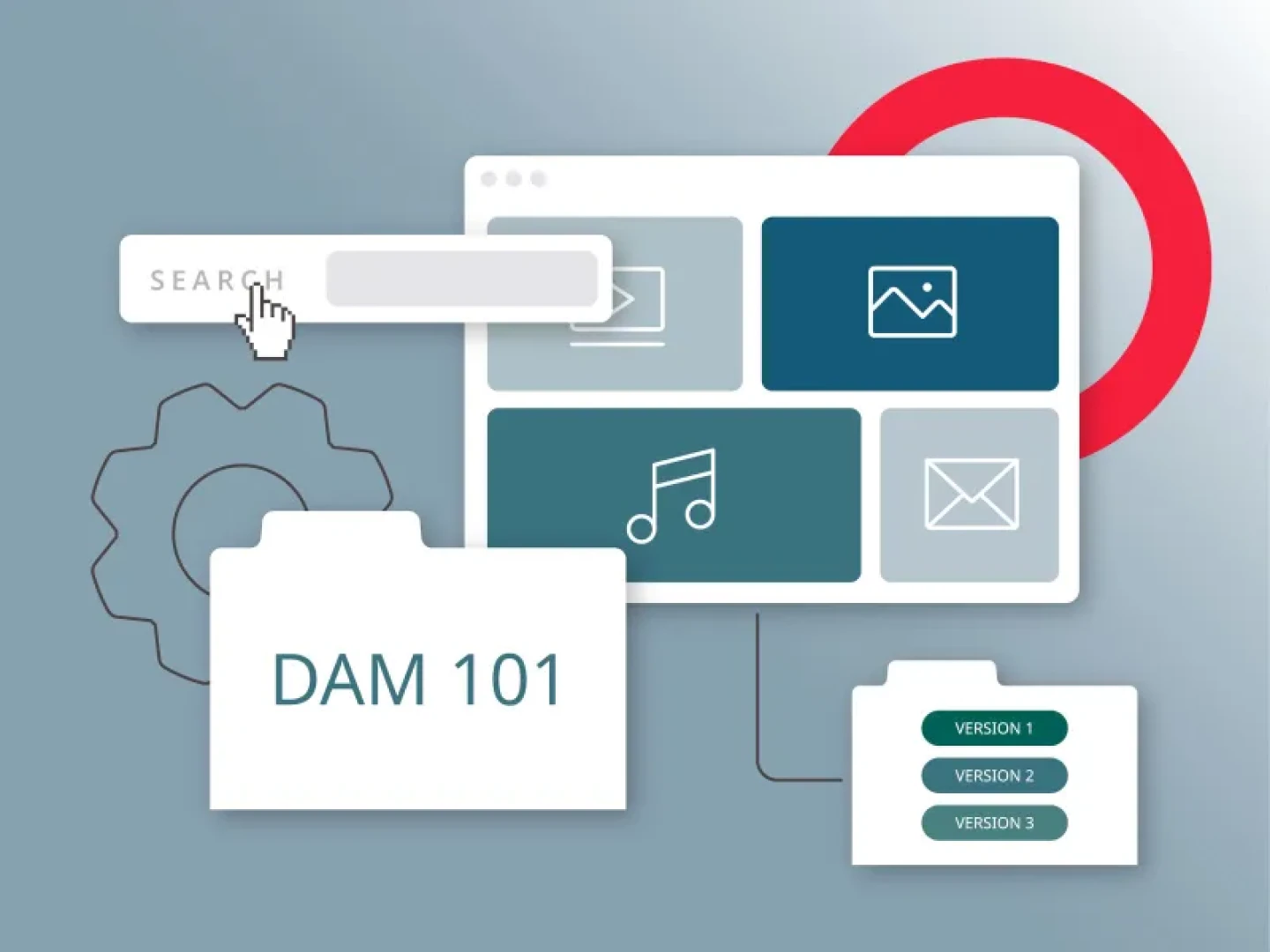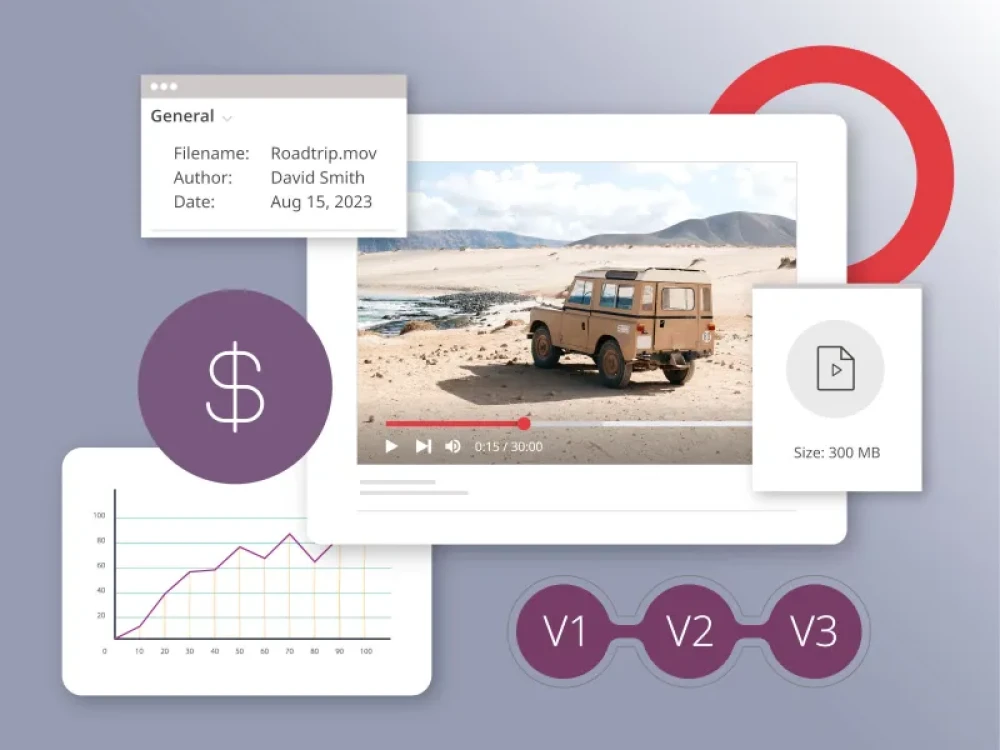Digital asset management (DAM) systems reshape how businesses handle their digital content, providing efficient solutions to challenges associated with content creation, distribution and brand management. These systems not only enhance productivity but also empower organizations to make informed, data-driven decisions in the dynamic digital landscape.
Key features and benefits of DAM systems
Digital asset management systems are designed to centralize and organize a company’s digital assets in a secure and easily accessible manner. Let’s take a closer look at some of the key features and benefits that make DAM an essential tool for modern businesses:
- Centralized asset repository: DAM systems provide a centralized repository for storing all digital assets, ensuring easy access for authorized users. This eliminates the need for scattered file storage and the risk of assets becoming lost or outdated.
- Efficient search and retrieval: With robust metadata tagging and search functionality, DAM systems allow users to quickly locate the assets they need. This efficiency boosts productivity and minimizes the time spent searching for files.
- Version control: DAM systems enable version control, ensuring that users always access the most up-to-date assets. This is crucial for maintaining brand consistency and avoiding errors caused by using outdated materials.
- Access control and permissions: DAM solutions offer granular access control, allowing organizations to define who can access, edit, or download specific assets. This ensures data security and compliance with privacy regulations.
- Streamlined collaboration: DAM fosters collaboration by enabling teams to work together on projects seamlessly. Multiple users can access and collaborate on the same assets, reducing the chances of miscommunication and duplication of work.
- Automated workflows: DAM systems often include automation features that streamline content creation and distribution. This can include automatic file conversion, resizing and distribution to various channels.
Streamlining content creation and distribution with DAM
One of the primary advantages of DAM systems is their ability to streamline content creation and distribution workflows. Here’s how DAM simplifies these processes:
- Efficient content creation: Content creators can access a library of approved assets, reducing the need to recreate content from scratch. This not only saves time but also ensures consistency in branding and messaging.
- Accelerated content distribution: DAM systems enable the swift distribution of assets to various channels and platforms. Whether it’s sharing marketing materials with external partners or providing product images to e-commerce platforms, DAM ensures assets reach their intended destinations promptly.
- Enhanced brand management: DAM systems serve as guardians of brand integrity. They store brand assets like logos, style guides and templates, making it easy for teams to adhere to brand guidelines and maintain a consistent brand image.
- Global accessibility: With DAM, teams across different locations can access and collaborate on assets in real-time, promoting global consistency and reducing the challenges of remote work.
- Data analytics: Some DAM systems offer analytics capabilities, providing valuable insights into asset usage. This data can inform content strategies and help organizations make data-driven decisions.
3 examples of successful DAM implementations
Let’s take a look a few use cases of where businesses can harness DAM for real-world outcomes:
- E-commerce: A global fashion retailer, implements a DAM system to manage its extensive catalog of product images and videos. By streamlining their content distribution to e-commerce platforms and social media channels, they realize a 30% increase in online sales within the first year.
- Global marketing: A multinational corporation, adopts DAM to enhance collaboration among its geographically dispersed marketing teams. This results in a 40% reduction in time spent on content creation and a 20% improvement in brand consistency.
- Healthcare: A healthcare provider, utilizes DAM to manage patient records and medical images securely. This leads to improved data security and compliance with healthcare regulations, ultimately enhancing patient trust.
Conclusion: The business impact of adopting DAM
In conclusion, digital asset management is not merely a convenience but a strategic asset for businesses in the digital age. It empowers organizations to centralize, organize and efficiently distribute their digital assets, resulting in improved productivity, brand consistency and collaboration. The case studies mentioned above demonstrate that successful DAM implementations can lead to significant business growth and enhanced brand reputation.
As you consider the role of DAM in your digital strategy, keep in mind that selecting the right DAM system for your specific needs is crucial. Evaluate your organization’s requirements and objectives and choose a DAM solution that aligns with your goals. With the right DAM system in place, you’ll be well-equipped to navigate the ever-evolving digital landscape and stay ahead of the competition.






